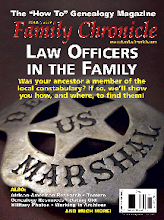 I want to talk about the blue jay.... I think they are so pretty. We have a couple that come frequently to our yard. They are drawn to our yard likely because our neighbor's John and Debi feed the squirrels peanuts and the blue jays come to get their share since peanuts are one of the foods they like. I have to be honest that I never paid much attention to birds until we moved back to Ontario and because there are so many interesting breeds that come to visit I pay more attention now. I posted a photo above of the little red squirrel that comes around to stock up on peanuts. This is Debi's photo which I "borrowed" from her blog. This little guy is pretty tame now and will take the peanuts right from your hand. And he is quite the pig because he comes and gets as many as are offered and then buries them all over the place stocking up for winter. He has such a sense of entitlement where peanuts are concerned there is often a chase and a fight that ensues between the squirrels and the jays. I spotted some hi jinks just the other day with the squirrel chasing after one of the jays for stealing a peanut. They are very entertaining.
I want to talk about the blue jay.... I think they are so pretty. We have a couple that come frequently to our yard. They are drawn to our yard likely because our neighbor's John and Debi feed the squirrels peanuts and the blue jays come to get their share since peanuts are one of the foods they like. I have to be honest that I never paid much attention to birds until we moved back to Ontario and because there are so many interesting breeds that come to visit I pay more attention now. I posted a photo above of the little red squirrel that comes around to stock up on peanuts. This is Debi's photo which I "borrowed" from her blog. This little guy is pretty tame now and will take the peanuts right from your hand. And he is quite the pig because he comes and gets as many as are offered and then buries them all over the place stocking up for winter. He has such a sense of entitlement where peanuts are concerned there is often a chase and a fight that ensues between the squirrels and the jays. I spotted some hi jinks just the other day with the squirrel chasing after one of the jays for stealing a peanut. They are very entertaining. I never have my camera handy when I spot the jays while doing my dishes. They often come and sit up on the fence close to my kitchen window and look down to see if Debi or John have put out any peanuts. By the time I fetch the camera and get it set up the jay is long gone. They do not wait around for long and they are not amenable to posing for photos. I had to find internet photos instead. "Time Waits For No Jay".
I never have my camera handy when I spot the jays while doing my dishes. They often come and sit up on the fence close to my kitchen window and look down to see if Debi or John have put out any peanuts. By the time I fetch the camera and get it set up the jay is long gone. They do not wait around for long and they are not amenable to posing for photos. I had to find internet photos instead. "Time Waits For No Jay". Here are some facts about the Jay....
Here are some facts about the Jay.... 
 The Blue Jay is a noisy, aggressive, and intelligent bird. Common and wide-ranging, the Blue Jay is admired for its beautiful plumage, but its reputation is clouded by its harsh treatment of other songbirds, chasing them from feeders and sometimes stealing their eggs and young.
The Blue Jay is a noisy, aggressive, and intelligent bird. Common and wide-ranging, the Blue Jay is admired for its beautiful plumage, but its reputation is clouded by its harsh treatment of other songbirds, chasing them from feeders and sometimes stealing their eggs and young.The jay is allied to the crow, the raven, and the magpie.
Resident east of the Rockies, from Canada to the Gulf of Mexico, but slowly encroaching westward. Preferred habitats include evergreen forests, farmlands, groves, and suburbs.
The Blue Jay's coloration is not derived by pigments, but is the result of light refraction due to the internal structure of the feathers; if a Blue Jay feather is crushed, the blue disappears as the structure is destroyed.
A group of jays has many collective nouns, including a "band", "cast", "party", and "scold" of jays.
Its food is sought both on the ground and in trees and includes virtually all known types of plant and animal sources, such as acorns and beech mast, weed seeds, grain, fruits and other berries, peanuts, bread, meat, small invertebrates of many types, scraps in town parks, bird-table food and rarely eggs and nestlings.
The blue jay lives in yards, gardens, woods, and parks; and prefers Oak trees or beech trees. Also all Blue Jays have strong black bills used for cracking nuts, and acorns and for eating corn, grains and seeds. They also eat insects such as beetles, grasshoppers, and caterpillars. Blue Jays have three toed feet which are good for wrapping around tree branches.
 It sounds like you, Mr Jay, do not have a very good reputation. I don't mind, I still enjoy your visits.
It sounds like you, Mr Jay, do not have a very good reputation. I don't mind, I still enjoy your visits.


































No comments:
Post a Comment